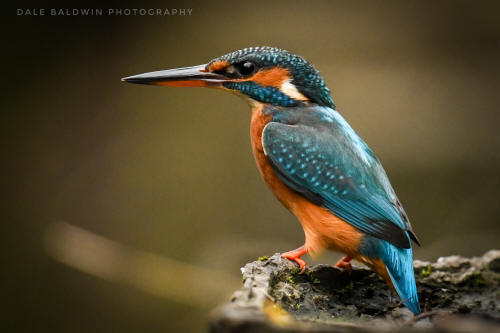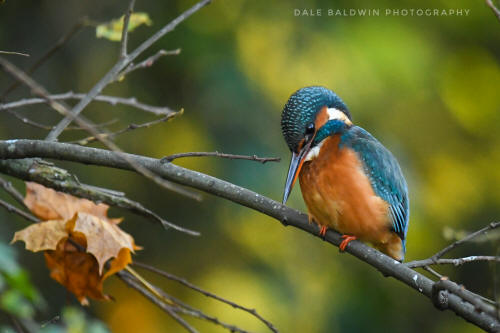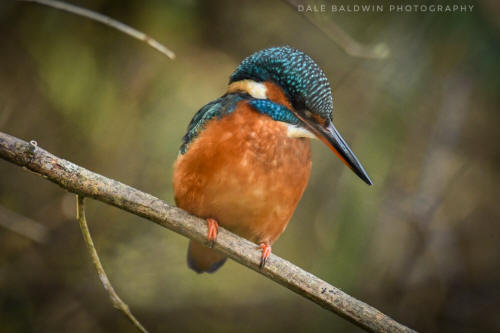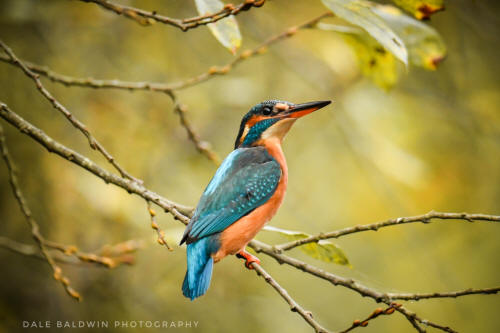Photos taken near The Hyde, next to the club house at Ifield Golf Course
Ifield Parish Map
The Flora & Fauna of Ifield
Fields are regarded here as grazed and/or crop-providing. Meadows tend to be less heavily cultivated with a greater variety of wildflowers and insects. Notable species to be found in the fields and meadows of Ifield include:
Skylark: Surely the songster. Most strongly associated with the open countryside. Now in decline because of farming practices.
Yellow Meadow Ant: An increasingly rare insect whose nesting mounds, of which ancient examples are numerous in the meadows to the west of St Margaret's Church, attract the feeding attentions of the Green Woodpecker or 'Yaffle'. The mounds are not just standalone visible surface features; they merely highlight the presence of a significant underground network of tunnels and chambers that can extend up to a metre below the surface. The ants actually live below the surface and the mounds help to regulate the temperature of the nest, as well as acting as a 'door'. The existence of these mounds indicates that the meadow has lain undisturbed for many years, possibly centuries. The tithe map of 1840 records the area hosting the mounds as being meadow which shows that some of our mounds could be up to 200 years, or more, old.
Marbled White Butterfly: An attractive butterfly whose caterpillars feed on meadow grasses; adults fly around July.
Roe Deer: More usually a woodland mammal (the largest in the parish) but can often be spotted feeding out in the fields.
Fox: Commonly found in woodland but hunts for small rodents such as; voles in the more grassy areas.
Photos taken near The Hyde, next to the club house at Ifield
Golf Course
Orchids: Two or three of these splendid plants can be found in some of the meadows; they include the Early Purple, Common Spotted and Pyramidal orchids
Pignut: Almost confined to one area of meadowland in the Local Green Space, the brown underground tubers of this carrot family are edible.
Field Mushroom: Soil rich patches, given optimal late summer weather conditions, can produce sporadic crops of this tasty fungus.
Our endangered hedgerows are principally of Hawthorn, Hazel and Blackthorn bushes with larger trees dotted along them, usually of Oak, Ash, Field Maple, Wild Cherry and the rarer Spindle. The hedgerows provide nectar sources for a variety of insects, nesting sites for birds and safer passage to larger wooded areas for a variety of smaller mammals. Notable species to be found in the hedgerows of Ifield include:
Brown Hairstreak Butterfly: A very localised butterfly whose larvae feed on the buds and leaves of the Blackthorn and laying its eggs over winter.
Long-tailed Tit: Builds its soft, feather-lined oval nest among the thorny interiors of Hawthorn and Blackthorn.
Warblers: The Blackcap, Whitethroat and Lesser Whitethroat warblers all favour hedgerows as nesting sites, usually low down. The Chiffchaff and its close relative, the now less common Willow Warbler, also add their pleasing notes to the overall chorus. Some Blackcaps and Chiffchaffs now over-winter here.
Hazel Dormouse: This attractive small rodent, as its name suggests, can be found where the ripe nuts of Hazel abound in the Autumn months. Blackberries are another food source. This is a hibernating species, hence the name dor-mouse, where 'dor' derives from 'dormir', the French for 'sleep'.
Hoverflies: Usually wasp mimicking, nectar feeding adults with Aphid feeding larvae. Increasing numbers of once rare Continental species are gradually appearing here.
Bracken or Braken Fern: A very common invader of field margins whose spores are said to be carcinogenic.
Spindle: A bush-forming shrub indicative of older hedgerows. This Euonymus species produces bright orange berries in Autumn.
Stinging Nettle: A surprisingly edible plant given the correct treatment. It is also the food plant of Nymphalid caterpillars, such as; Peacock, Red Admiral and Small Tortoiseshell.
Ifield is blessed with the survival of pockets of ancient woodland, mostly of Oak and other deciduous trees which together support an enormous variety of wildlife including some of Britain's rarest species. Notable species to be found in the woodland of Ifield include:
Bluebells: Ifield Parish contains one of the finest bluebell sites in Sussex; Burlands Copse on the ridge above Ifield Wood. Optimal flowering occurs some time in April, depending on the vagaries of winter and early spring weather. The bluebell is probably Britain's most popular wild flower and is a member of the Lily family.
Photos taken in Burlands Copse
Ramsons Garlic: This strong smelling, edible-leaf species flowers in Spring and favours woodland glades and margins. As with the Bluebell, Ramsons Garlic flowers early in order that it may take advantage of maximum natural light conditions before the increasing tree canopy reduces the light source by up to 90%.
Photo of a woodland floor covered in Ramsons Garlic, taken in Hyde Hill Woods before the white flowers
appeared
Badger: Small colonies of this powerful member of the Weasel family occur in woodland locations across the parish. Setts still exist in the Local Green Space and in the grounds of Ifield Rectory as well as around the Golf Course area.
Slow worm: This legless lizard prefers hedgerow bottoms and woodland margins for cover, where it hunts for insects, spiders and its favourite food - slugs, which makes it a friend of the gardener. It hibernates over winter, often in compost heaps.
Bracket fungi: Often adorning the lower trunks of large trees, especially Oaks, these tough protrusions give a warm reddish colouring to the wood that has been invaded by their mycelia.
Daldinia Concentrica: A black, hard, ball-like fungus, often found on older or dying Ash trunks and branches and commonly called 'Cramp balls' or 'King Alfred's Cakes'. Once broken open and scraped it can be used to light a fire.
Jay: This brightly coloured member of the Crow family gives its presence away with harsh screeching. By burying quantities of acorns as future food caches it, like the common grey squirrel, helps to perpetuate our Oak woods and forests.
Buzzard: At one time a more western bird, this large raptor has spread gradually eastwards and now nests in our Ifield woodland in small numbers. Families can often be seen high over open fields where they can pinpoint small mammals and carrion as food.
Other birds of prey: The Kestrel is also a woodland nesting bird favouring tree hollows. The Sparrowhawk and the now much rarer Hobby, prefer more open tree cleft situations, which give delight to the bird-watcher. Another bird of prey the Tawny Owl hunts by night across Ifield, even in gardens.
Rural Ifield is bisected by the infant River Mole, which rises in Baldhorns Copse in Rusper and ultimately flows northwards into the River Thames. Ifield Brook joins the Mole just below Ifield Court, at a point where they are roughly the same size, and makes a huge contribution to its onward flow. Ifield Brook itself is fed by waters from Ifield Millpond, which in turn receive waters from streams and ponds in Holmbush & Broadfield Forests via Bewbush, Dowster & Broadfield Brooks. These aquatic environments attract many kinds of invertebrate fauna fed on by a variety of fish and bird life. Notable species to be found in and around the water courses and wetlands of Ifield include:
Swollen River Mussel: Once extracted from Ifield Brook and broken open by Crows, this increasingly rare mollusc no longer leaves evidence of this avian activity on the fields. A mussel bed for extra food was, in the past, maintained in the spillway of the millpond.
Swan Mussel: The largest freshwater species in Britain - up to 23 cm in shell length - may still occur in Ifield Millpond. The pond was drained in 1976 and large examples of this large mollusc lay dead on the muddy bed.
Beautiful Demoiselle Damselfly: A lovely species of damselfly. The males have slightly blue forewings whereas the females have those of a more of a greenish bronze colour. In summer they fly, butterfly like, near to open stretches of water, feeding on smaller insects. Their young are aquatic.
Male (left) and Female (right) Photos taken in Ifield Brook Meadows
Great Crested Newt: This attractively marked, nationally protected amphibian, is the largest of our three native species and is to be found in a number of Ifield's ponds and small lakes - including the pond on the ridge of Ifield golf course.
Grass Snake: Often found curled up by watersides, this non-venomous reptile can sometimes be spotted swimming in search of fish and frogs. It can occasionally lay its eggs in garden compost heaps for warmth.
Water Shrew: A single sighting in Ifield Brook and a dead example on a rough path in the Local Green Space much more recently, in 2024, give reason to hope that this rare mammal still persists in Ifield Parish.
Egyptian Goose: Escapes from waterfowl collections have produced a feral population of this handsome bird which can be seen feeding in local fields and with their goslings at Ifield Millpond.
Photos taken at Ifield Millpond
Mandarin Duck: A tree nesting Chinese exotic bird, feral from escapes into the wild and now a fairly regular member of the Ifield bird population at both Ifield Millpond and Goffs Park. There are said to be larger numbers of these species in Britain, than in its homeland.
Photo taken at Goffs Park Pond
Common Carp: Believed to have been introduced to Europe from Asia by the Romans, this large fish - more than 40lb (18kg) in weight under domestic conditions - occurs in the Millpond.
Other fish species: Commonly fished at Ifield Millpond, species include: Chub, Perch, Rudd, Bream, Roach, Dace and Pike (a voracious feeder on other fish). By law, all fish are put back into the water after weighing, photographing and measuring. As well, as the smaller Minnows and Sticklebacks in Ifield Brook, there are reports of Brown Trout, Bullheads and Stone Loach occurring there in the past, but they are now, sadly, long gone due to pollution.
Great Crested Grebe: This handsome fish-feeder is now a more frequent sight across Britain's lakes and large ponds than earlier last century, when it was regarded as extremely rare.
Photos taken at Ifield Millpond
Kingfisher: At least two pairs of this exotic looking bird are known to occur around Ifield Millpond and along Ifield Brook, where it nests in holes excavated from the softer banks.




Photos taken at Ifield Mill Pond. Courtesy of and © Dale Baldwin
Grey Wagtail: This handsome yellow chested, slate blue backed bird is constantly in motion, seeking small flying insects. One of the best places to catch a glimpse of it is around Ifield Mill, quite often on the concreted side of the weir.
Of Britain's 68 remaining species of Longhorn Beetle, 24 are to be found in this ancient parish. This is an unusually large number for such a small area; more than a third! The majority of their larvae feed in wood whilst most of the adults are sustained by flower nectar. Longhorn Beetles indicate the persistence of ancient woodland and of old and ancient hedgerows. Males have longer antennae (horns) than the females and can be three times their body length. Ifield species are:
Ragium Mordax - Black Spotted Longhorn: Occurs in Beech, Birch and Oak. Emerges in May into June. This species are widespread locally and are common and frequent.
Stenocorus Meridianus - Variable Longhorn: A scarce species, normally found on dying Beech and old Ash trees. Adults feed on nectar sources such as Hawthorn blossom, Hemp Agrimony and Hemlock Water Dropwort.
Grammoptera Ruficornis - Common Longhorn: Common in West Sussex and widespread and abundant throughout England. Larvae feed in Oak, Hawthorn, Field Maple, etc. The adults swarm from late April to July at nectar sources, including Hawthorn blossom and Field Maple flowers.
Grammoptera Holomelaena - Black Grammoptera: Regarded by some as a dark variety of Grammoptera Ruficornis and by others as a distinct species. Locally common from May to July.
Grammoptera Ustulata - Golden Burnished Longhorn: Scarce - Ifield Parish has the only records of this species in Sussex. The larvae feed in old Oaks whilst adults feed on Hawthorn nectar and Wild Rose.
Pachytodes Cerambyciformis -Speckled Longhorn: Scarce, though fairly widespread. The larvae feed in the roots of Oak, Birch, Sweet Chestnut, etc. Adult specimens hover, wasp like, over flower-heads of the Elder, Rhododendron, etc. from May through to July.
Alosterna Tabacicolor - Tobacco Coloured Longhorn: A possibly declining species, sometimes frequent, otherwise scarce. The larvae can be found feeding in Oak, Field Maple, etc. whilst the adults can be found feeding on the nectar of Hawthorn, Bramble and umbellifers between May and July.
Pseudovadonia Livida - Fairy-Ring Longhorn: An unusual beetle whose larvae feed in the soil on myeelia of Marasmius Oreades. Adults feed on the nectar of Bramble, Yarrow and Hogweed in July. Generally scarce in Great Britain, but widespread locally.
Rutpela Maculata - Black & Yellow Longhorn: A widespread and frequently common species whose larvae develop in deciduous trees including Oak, Beech, etc. The adults nectar on Wild Rose, Hemlock, Water Dropwort, Hogweed and Bramble from June to August.
Stenurella Melanura - Black Striped Longhorn: Widespread in South East England. The larvae feed in deciduous trees, including Birch and adults nectar on Oxeye Daisy, Bramble, umbellifers, etc. Females are dimorphically larger and more brightly patterned than males. A June species.
Asemum Striatum - Pine-stump borer: Once an exclusively Scottish species, these are now local, but scarce throughout England and Wales. The larvae can be found in living and dead conifers. The adults are nocturnal and crepuscular.
Arhopalus Rusticus - Dusky Longhorn: A scarce, although widespread species. The larvae feed in Spruce and Pine and the adults remain beneath bark, are nocturnal and are attracted to light.
Obrium Brunneum - Conifer Longhorn: First discovered in the UK in 1936 (probably introduced), it is still confined to the southern counties, though it is spreading slowly. Discovered in the author's garden in Ifield! The larvae feed in dry twigs of Spruce and Pine.
Obrium Cantherinum - Longhorn: Now disappeared from Britain. The emergence holes and possible remains found in tree holes in Ifield, suggest they may be here, although supposedly extinct since 1930.
Glaphyra Umbellatarum - Pear Shortwing Beetle: A rare very localised species, the males of which brandish very long antennae. The larvae feed in Wild Rose and Bramble and the adults on umbellifers (e.g. Hemlock, Water Dropwort) and Wild Rose nectars.
Phymatodes Testaceus - Tanbark Borer: The larvae are found living in Oak and adults are nocturnal and attracted to light.
Poecillium Alni - White Banded Longhorn: A scarce and declining species, local in the south. The larvae favour feeding on Oak and Alder in woodland and the species is usually found as adults on the bark of the trees favoured by the larvae.
Clytus Arietes - Wasp Beetle: A striking wasp mimic, as an adult. Its larvae can be found in Beech, Oak and Sweet Chestnut. Very common, sometimes swarming on log piles and Hawthorn blossoms.
Agapanthia Villosoviridescens - Golden-Bloomed Grey Longhorn: Recently discovered and photographed in a field next to Ifield Hall Wood, this attractive beetle with banded 'horns' lays its eggs in the living stems of herbaceous, perennial herbs such as thistles. Frequent and increasing in range.
Pogonocherus Hispidulus - Greater Thorn-tipped Longhorn: A lichen-coloured beetle, laying its eggs in decaying or recently dead thinner branches of deciduous trees and shrubs. Found in Ifield on Oak and Small Leaved Lime. A scarce, local species throughout England and Wales.
Pogonocherus Hispidus - Lesser Thorn-Tipped Longhorn: A surprisingly scarce species in England and Wales this species is lichen-patterned like the Greater thorn tipped, but usually smaller. Found in numbers among Holly bushes in Ifield. An all year round beetle favouring Lime in Ifield Hall Wood in summer, with the adults feeding on lichens and algae growths.
Leiopus Species - Black-Clouded Longhorn: A frequent, sometimes abundant beetle which is difficult to spot out on the bark of the larvae food plants (Oak, Cherry, Birch, Beech, occasionally Spruce) where it feeds on algae.
Phytoecia Cylindrica - Umbellifer Longhorn: Adults lay their eggs in the pith of Cow Parsley and Rough Chervil stems, etc. A widespread species in Southern and Central England, but generally scarce.
Tetrops Praeustus - Plum Longhorn: Another widespread, though usually a scarce little beetle whose larvae feed in the twigs and more slender branches of broad-leaved trees. The adults feed on the leaves of the host trees.
Tetrops Starkii - Longhorn: This very local, usually rare relative of the Plum Longhorn Beetle produced a specimen which landed on the author's back when crossing a bridge across Ifield Brook! Similar to the other Tetrops but seems to be confined to Ash on the Continent.
Tropical Longhorns: There are more than 25,000 species of Longhorn beetles in the world; mostly tropical which means that the British Isles is pretty poorly represented, with only 68 species of small to moderate size. The giants of the family (Cerambycidae) are to be found in the forests of Central and South America, Africa and tropical Asia. The largest (but not the heaviest) beetle on the planet is the Amazonian Titan Beetle (Titanus giganteus) whose powerful jaws can easily snap a thick pencil in two!
Text © David Moon, edited by Ian Mulcahy. Photographs © Ian Mulcahy (unless stated). Contact photos@iansapps.co.uk or visit my 'Use of my photographs' page for licensing queries.